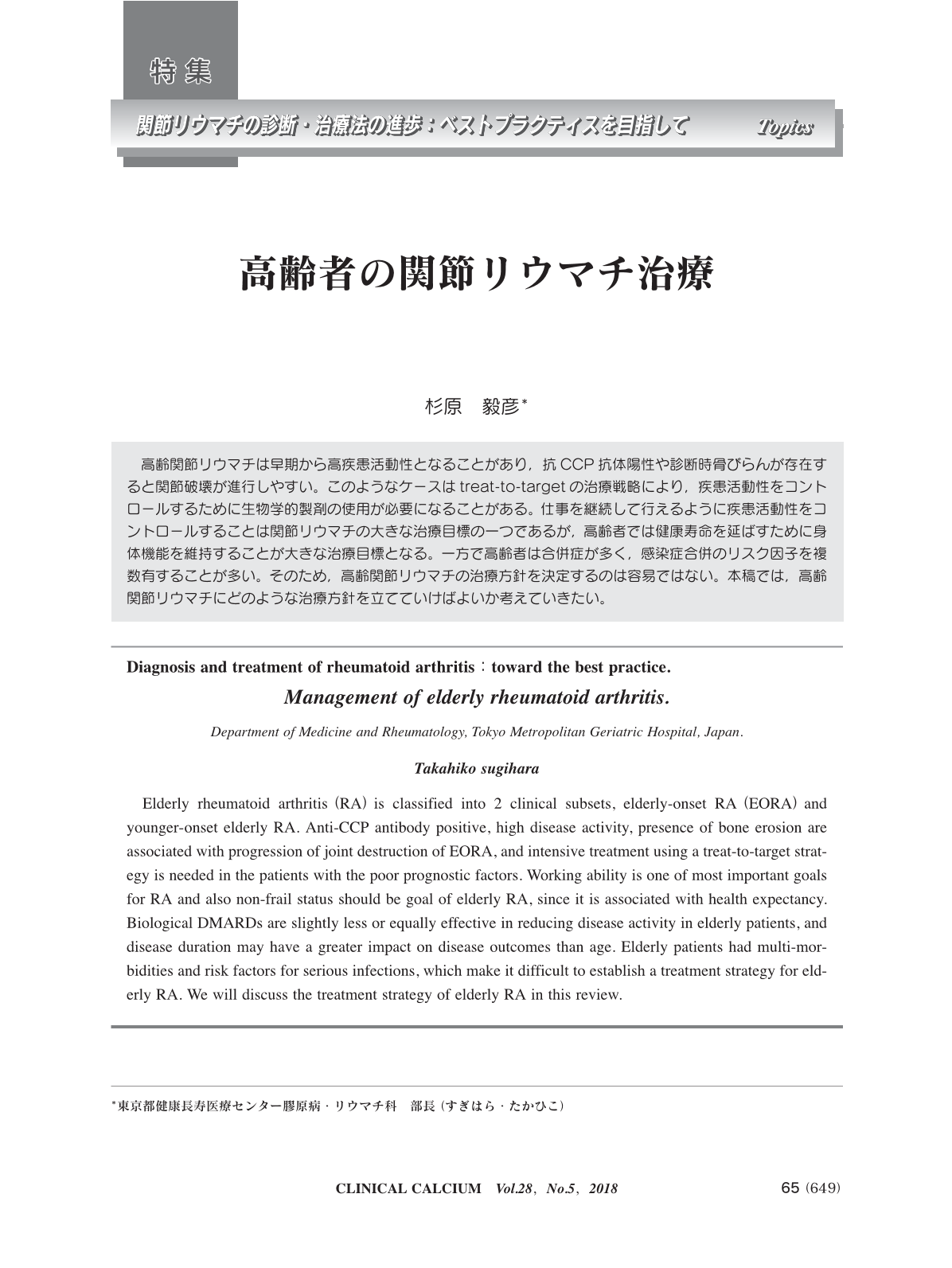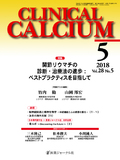Japanese
English
- 有料閲覧
- Abstract 文献概要
- 1ページ目 Look Inside
- 参考文献 Reference
高齢関節リウマチは早期から高疾患活動性となることがあり,抗CCP抗体陽性や診断時骨びらんが存在すると関節破壊が進行しやすい。このようなケースはtreat-to-targetの治療戦略により,疾患活動性をコントロールするために生物学的製剤の使用が必要になることがある。仕事を継続して行えるように疾患活動性をコントロールすることは関節リウマチの大きな治療目標の一つであるが,高齢者では健康寿命を延ばすために身体機能を維持することが大きな治療目標となる。一方で高齢者は合併症が多く,感染症合併のリスク因子を複数有することが多い。そのため,高齢関節リウマチの治療方針を決定するのは容易ではない。本稿では,高齢関節リウマチにどのような治療方針を立てていけばよいか考えていきたい。
Elderly rheumatoid arthritis(RA)is classified into 2 clinical subsets, elderly-onset RA(EORA)and younger-onset elderly RA. Anti-CCP antibody positive, high disease activity, presence of bone erosion are associated with progression of joint destruction of EORA, and intensive treatment using a treat-to-target strategy is needed in the patients with the poor prognostic factors. Working ability is one of most important goals for RA and also non-frail status should be goal of elderly RA, since it is associated with health expectancy. Biological DMARDs are slightly less or equally effective in reducing disease activity in elderly patients, and disease duration may have a greater impact on disease outcomes than age. Elderly patients had multi-morbidities and risk factors for serious infections, which make it difficult to establish a treatment strategy for elderly RA. We will discuss the treatment strategy of elderly RA in this review.



